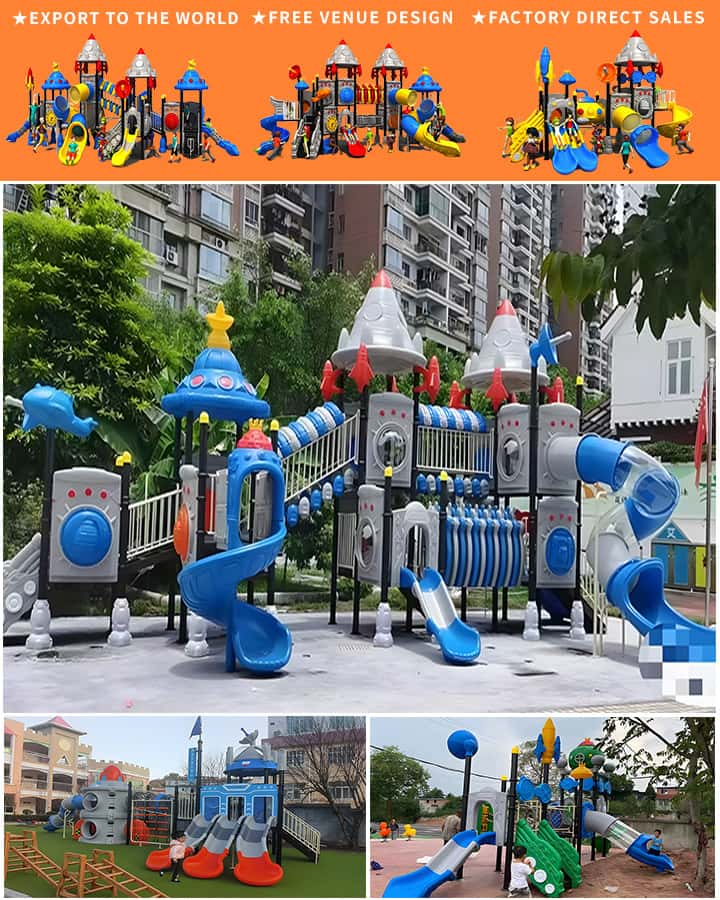In the bustling world of education, middle schools strive to provide a holistic development environment for their students. One crucial aspect often overlooked is the role of outdoor playground equipment. These installations not only serve as recreational spaces but also contribute significantly to the physical and mental well-being of adolescents. This article delves into the essential aspects of outdoor playground equipment for middle schools, highlighting their benefits, types, safety considerations, and maintenance tips.
Benefits of Outdoor Playground Equipment for Middle Schools
Outdoor playground equipment offers numerous advantages that extend beyond mere recreation. Firstly, it promotes physical fitness by encouraging students to engage in regular exercise, which is vital during their formative years. Activities such as climbing, swinging, and sliding enhance motor skills, coordination, and overall strength. Secondly, these play areas foster social interaction, teamwork, and communication as students collaborate and compete in a fun, informal setting. Lastly, exposure to nature and fresh air can alleviate stress and improve mental health, creating a balanced atmosphere conducive to learning.
Types of Outdoor Playground Equipment for Middle Schools
Middle school playgrounds should be equipped with diverse and age-appropriate structures to cater to varying interests and developmental needs. Here are some popular options:
Climbing Structures
Climbing walls, ropes, and towers challenge students to test their strength and problem-solving skills. They build confidence, resilience, and spatial awareness.
Swings and Gliders
Swings and gliders are classic playground components that offer simple yet exhilarating experiences. They develop balance and coordination while providing a sense of freedom and relaxation.
Slides and Dips
Slides of various heights and dip stations allow for dynamic movement, enhancing cardiovascular health and core stability. They also encourage friendly competition among peers.
Basketball Hoops and Sports Courts

Sports-themed equipment like basketball hoops, soccer goals, and foursquare courts cater to athletic students, promoting sportsmanship, strategy, and healthy competition.
Interactive and Inclusive Equipment
Incorporating interactive elements such as musical instruments, spinners, or sensory-rich panels ensures inclusivity for all students, including those with disabilities, fostering an environment of equality and empathy.
Safety Considerations
Safety is paramount when designing and installing outdoor playground equipment for middle schools. Compliance with national and local safety standards is non-negotiable. Here are key factors to consider:
Material Quality
Equipment should be made from high-quality, weather-resistant materials that can withstand heavy use without compromising safety.
Proper Surfacing
The ground beneath play structures must have appropriate impact-absorbing surfaces, such as rubber mats or wood chips, to minimize injury risks from falls.
Age Appropriateness
Ensure that the equipment suits the age range and physical capabilities of middle school students, avoiding overly complex or hazardous designs.
Supervision and Education
Adequate adult supervision is crucial during playtime, coupled with education on safe usage practices and emergency procedures.
Maintenance Tips
Regular maintenance is vital to keep outdoor playground equipment functioning safely and efficiently. Here are some maintenance tips:
Routine Inspections
Conduct visual inspections monthly to identify any signs of wear, tear, or damage. Address minor issues promptly before they escalate.
Cleaning and Sanitizing
Clean equipment regularly to remove dirt, debris, and potential allergens. Use child-safe disinfectants if applicable.
Lubrication and Repairs
Lubricate moving parts annually to prevent stiffness and ensure smooth operation. Seek professional repairs for major damages or structural issues.
Landscaping and Drainage
Maintain proper landscaping around play areas, ensuring adequate drainage to prevent waterlogging and erosion.
In conclusion, investing in well-designed, diverse, and safe outdoor playground equipment for middle schools is a strategic decision that yields long-term benefits for both students and educators. By prioritizing physical fitness, social development, and mental well-being, these playgrounds become more than just recreational spaces; they transform into vibrant hubs of growth and learning. With careful planning, adherence to safety standards, and consistent maintenance, outdoor playgrounds can truly enrich the middle school experience.




